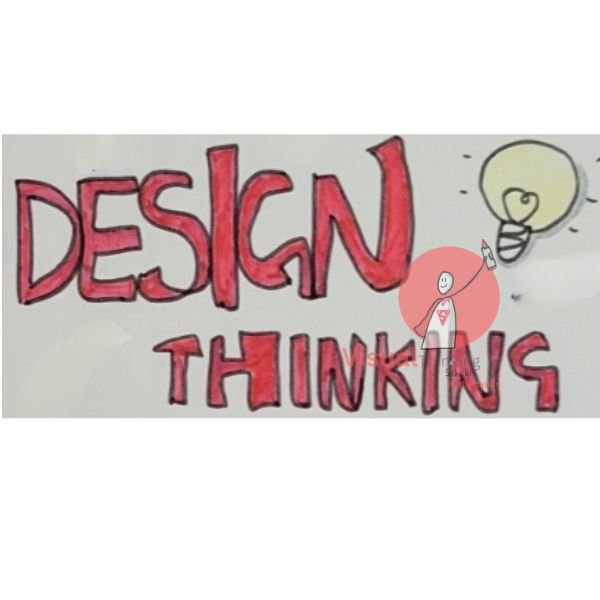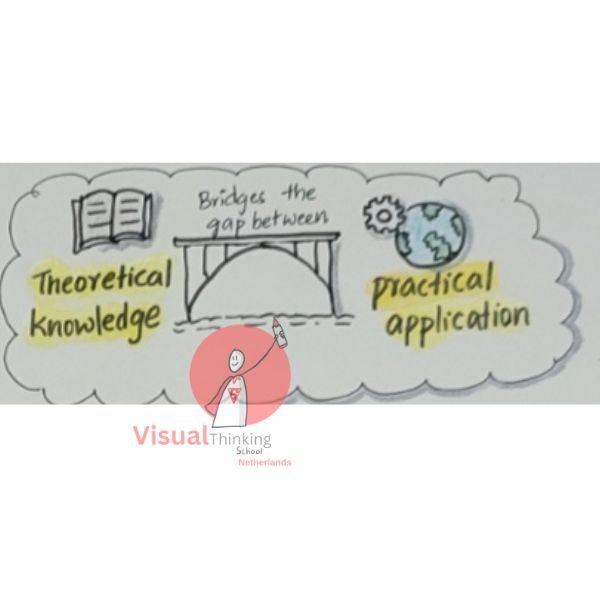

Design thinking, often hailed as a transformative problem-solving approach, has taken the world by storm. It’s a methodology that places creativity at the forefront to develop innovative solutions, bridging the gap between theoretical knowledge and practical application. In this comprehensive blog, we will explore the ins and outs of design thinking, highlighting its significance in teaching, learning, collaboration, and teamwork. So, grab your maths sketch notes and get ready to embark on a journey into the world of design thinking, where innovation knows no bounds.
At its core, design thinking is a human-centred approach to problem-solving. It’s a methodology that prioritises empathy, creativity, and innovation to develop solutions that truly resonate with end-users. Whether you’re tackling complex challenges in business, education, or everyday life, design thinking offers a structured framework to find solutions that are not just effective but also user-centric.

It involves a systematic process comprising five key stages:
This stage is all about understanding the problem from the user’s perspective. It involves active listening, observing, and immersing oneself in the user’s experience to gain deep insights into their needs and pain points.
In this stage, the focus is on generating creative ideas. Participants brainstorm and think outside the box, exploring various possibilities without judgement. The goal is to come up with a wide range of potential solutions.
Here, the ideas generated in the ideation stage are refined and synthesised. The problem is defined more precisely based on the insights gained during the empathise stage. This stage sets the direction for the solution.
Prototyping involves creating tangible representations of potential solutions. These prototypes can be sketches, physical models, or even digital simulations. Prototyping allows for testing and refining ideas in a low-risk environment.
The final stage is about testing the prototypes with actual users. This step helps gather feedback and insights, allowing for further refinement and improvement of the solution. It’s an iterative process that ensures the final solution is user-centred and effective.
A maths sketchbook is a versatile tool that can greatly aid in the design thinking process. Its blank pages provide a canvas for brainstorming, sketching, and visualising ideas at every stage. Whether you’re empathising with users by sketching their experiences, ideating by visually representing innovative concepts, defining problems through diagrams, prototyping through drawings or models, or documenting feedback from testing, a maths sketchbook can be your trusty companion.

This is not limited to the realm of professionals. It’s also a valuable tool for teaching and learning, enhancing educational experiences. When students engage in design thinking, they are not only solving problems but also developing critical skills such as creativity, collaboration, and communication. The structured process of design thinking provides a framework for tackling complex challenges, making it particularly useful in project-based learning environments.

Design thinking is inherently collaborative. It encourages individuals from diverse backgrounds to come together and work as a team to solve problems. Collaborative problem-solving is a skill that is highly sought after in today’s workplaces. Design thinking not only nurtures this skill but also emphasises the importance of empathy, active listening, and open communication within teams.

One of the standout features of design thinking is its ability to bridge the gap between theoretical knowledge and practical application. It encourages individuals to apply what they’ve learned in a real-world context. This makes it a powerful approach in education, where students can take theoretical concepts and put them into practice through hands-on problem-solving.

Empathy is a cornerstone of design thinking. By understanding the needs, desires, and pain points of users, designers can create solutions that truly address real-world problems. It’s not just about designing for people but designing with them. Empathy fosters a deeper connection between designers and users, resulting in solutions that resonate on a profound level.
Ideation is where the magic happens in design thinking. It’s the phase where participants are encouraged to think freely and generate a multitude of ideas. This creative process often leads to innovative and unexpected solutions. Ideation challenges individuals to break free from traditional thinking patterns and explore new possibilities.

Prototyping is a pivotal stage. It allows for the transformation of ideas into tangible representations. By creating prototypes, designers can quickly test and refine their concepts. This iterative process ensures that the final solution is not only functional but also user-friendly and efficient.
The testing stage is where the rubber meets the road. This feedback loop is invaluable for fine-tuning the solution. It ensures that the end product is not just a theoretical concept but a practical and user-centric solution to a real problem.

In a world where innovation and creative problem-solving are highly prized, it stands out as a powerful approach. It emphasises empathy, creativity, and collaboration, making it a valuable tool in various domains, from business to education. With the aid of a maths sketchbook, individuals and teams can navigate the five key stages of design thinking, transforming ideas into innovative solutions that bridge the gap between theory and practice. So, embrace the principles and let your creativity and empathy guide you towards impactful problem-solving and innovation.
We conduct online and in-person certification trainings on our Trade Marked Training on Business Sketchnotes ™.
We have an open challenge in our trainings : If you can not draw after our 9 hours of trainings, we will close our trainings FOR EVER !! ..and we are still waiting for that one person even after training more than 38000 professionals.
You can also join our whatsapp community to learn from those who have attended our trainings

We trained more than 38000 professional and gave corporate trainings in more than 65+ top notch companies

Check Our Trainings

Maths educator by profession and sketchnoter by passion. She loves teaching maths using sketchnotes. She is also an acredited school sketchnote trainer with Visual Thinking School, Netherlands.
More of her sketchnotes can be checked on her Instagram: @Lavanya_anugula